St. George Island State Park, St. George Island, Florida
In the six hundredth year of Noah’s life, on the seventeenth day of the second month – on that day all the springs of the great deep burst forth, and the floodgates of the heavens were opened. And rain fell on the earth forty days and forty nights. ~ Genesis 7:11-12
Did you know this is the first time it rained? That had to be a real shocker to people!
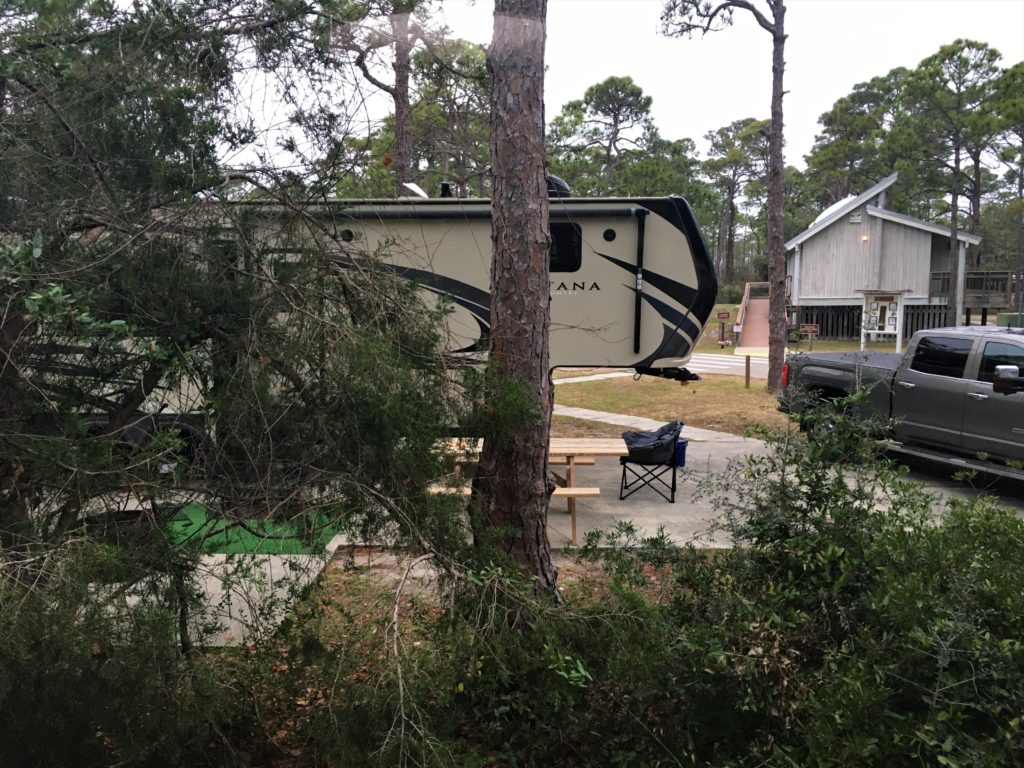
Good morning, St. George! 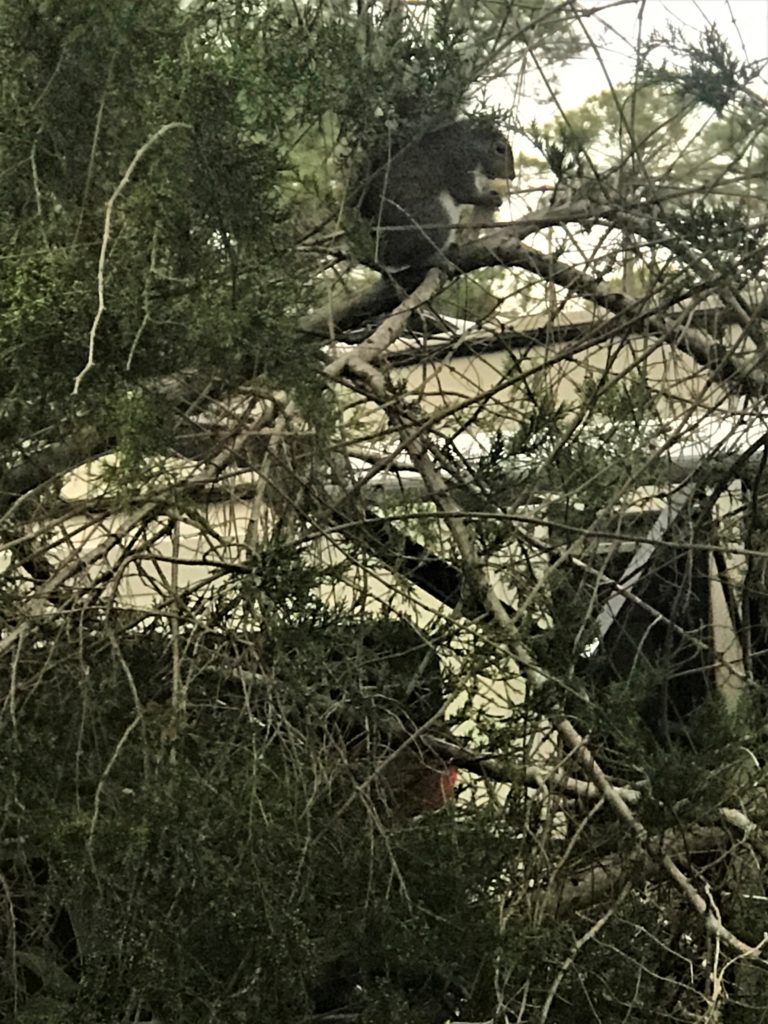
And good morning, Mr. Squirrel!
I searched high and low and everywhere in between to find out how this State Park got its official name – Dr. Julian G. Bruce St. George Island State Park. I found no evidence whatsoever of any person by that name. No one. And nothing in the State Park’s history from any resource. If we ever stop by the office, or run into a Ranger, I’ll have to remember to ask. Weird!
I found the following on a property rental company’s website:
A rare sea island, St. George Island has a history as vividly colorful as its unspoiled native flora. It was first inhabited by the Creek Indians between the 10th and 15th centuries. The arrival of European colonists to the area in the late 1700s was followed by an intense struggle for control. In 1803, the Creek Indians ceded a large tract of land, which included St. George Island, to trader John Forbes and Company, known as the ‘Forbes Grant’. Bob Sike’s Cut separates St. George and Little St. George Islands. It was cut to provide Apalachicola fishing fleets and other vessels access to the gulf from Apalachicola Bay. During the first half of the 1900s, the island’s pine forest was turpentined. St. George was also the location for numerous training exercises by troops from bases located on the adjacent mainland during World War II.
I also found the following colorful history:
The park preserves 2,023 acres of pristine barrier island environment, including miles of undeveloped white sand beach. St. George Island State Park also preserves locations of significant Florida and national historic significance. As a historical marker just inside the main entrance notes, this was where the ship carrying the infamous pirate and adventurer William Augustus Bowles wrecked while bringing him back to Florida in 1799.

Bowles, a former British soldier who had been thrown out of the service in Pensacola for insubordination, had married into the family of the Lower Creek/Seminole chief Thomas Perryman. After returning to assist the British during the Battle of Pensacola of the American Revolution, he had set about trying to establish a Native American empire in Florida.
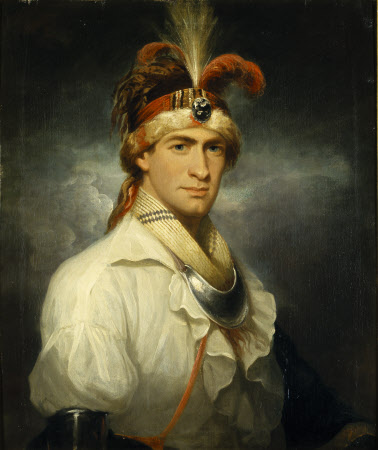
Bowles had subsequently been captured by the Spanish, who then claimed Florida, but had escaped and made his way to England. With help from the English, he was returned to Florida aboard the warship H.M.S. Fox. As the Fox neared the east end of St. George Island, however, it ran aground and was shattered. Fox Point on the island still bears its name.
U.S. Commissioner of Limits Andrew Ellicott was then engaged in surveying the boundary line between Spanish Florida and the United States and as his schooner came down the Apalachicola River into Apalachicola Bay, he unexpectedly received the following from Lt. James Wooldridge, captain of the Fox:
“…As there is no possibility of saving the schooner, I trust sir, your humanity will induce you to stop here, and devise with me, some means of removing these unfortunate men, who have nothing more than some provisions saved from the wreck to exist on; the island producing nothing; on the contrary, for two days, during the late gale, the sea made a breach over it, so that for those two days, we were with nearly two feet water on the ground.”
The letter was delivered by two of Ellicott’s sailors who had been sent into the bay in a small boat. They also brought a letter from William Augustus Bowles, requesting an audience with the U.S. commissioner.
Ellicott went immediately to the relief of the castaways. After informing them that he could not violate U.S. neutrality by providing them more than humanitarian assistance, he delivered up supplies of food to the stranded men and held numerous discussions with both Lt. Wooldridge and Bowles himself. The latter individual, he noted, “behaved on all occasions whilst with me in a polite and friendly manner, and generously furnished me with the necessary charts and directions, for sailing round Cape Florida, a matter of great importance to me.”
Bowles, of course, did soon return to shore where he resumed his efforts to establish his “State of Muskogee.” He went so far as to commission a flotilla of privateer (pirate) ships to prey on Spanish shipping in the Gulf of Mexico. He is the individual celebrated in Fort Walton Beach, Florida, as the pirate “Billy Bowlegs.” (Not to be confused with the Indian chief of the same name).
The east end of St. George Island still looks much as it did when William Augustus Bowles was stranded there in 1799 and is preserved as sensitive environmental area. Other historical exhibits in the park include a display on Apalachicola oyster fishing at the East Slough boat ramp. Visitors can inspect a boat and other tools used in harvesting Apalachicola oysters.
I suspect these exhibits were washed away by Hurricane Michael, because we’ve not located them. At least not yet! 😊
We went exploring a bit today – first to the bay side of the island, then the Gulf side, and then a drive into town.
We waited on me until one o’clock in the afternoon to venture out. I had Bible study and phone calls, etc. Our campground sits on the tiny spit of land between the bay and Gulf, so it was just a short walk over to the bay. The weather is still heavily overcast, and quite cool, the high today only maybe reaching 50⁰ at most. I think it was closer to 45⁰. I wore gloves.
We were kinda surprised to see all the erosion along the shore of the bay. I guess because it made the Michael hurricane damage so obvious. With the overcast skies, it was rather eerie.
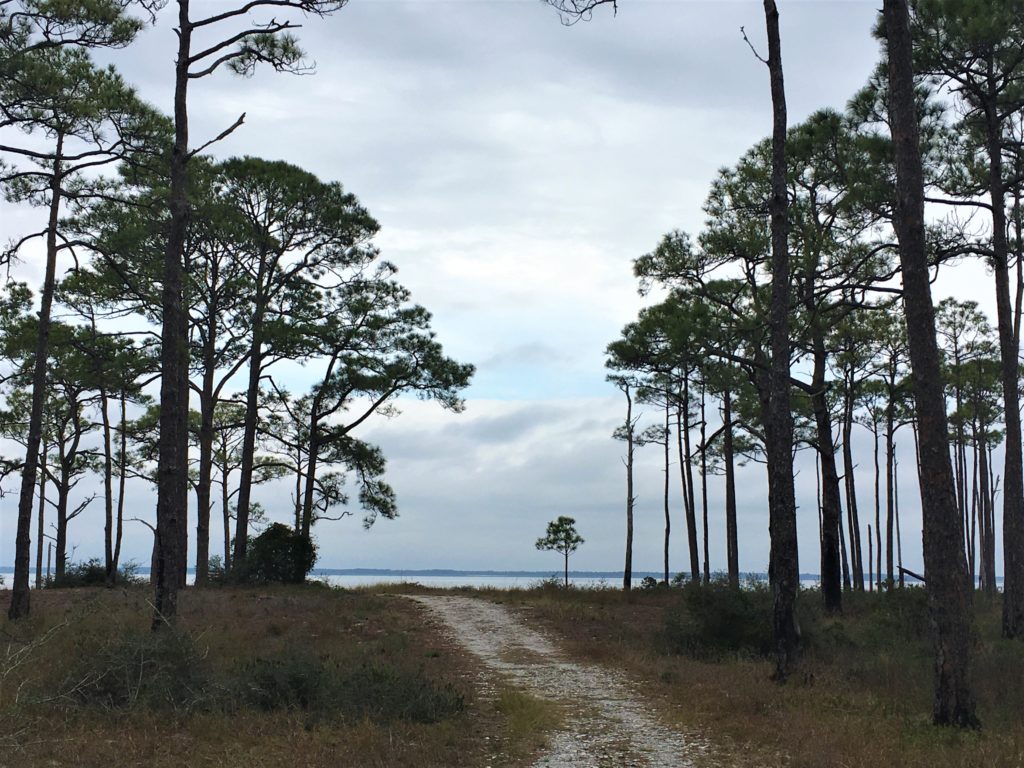
This area is a major oyster capital, but we’ll get to that another day. : )
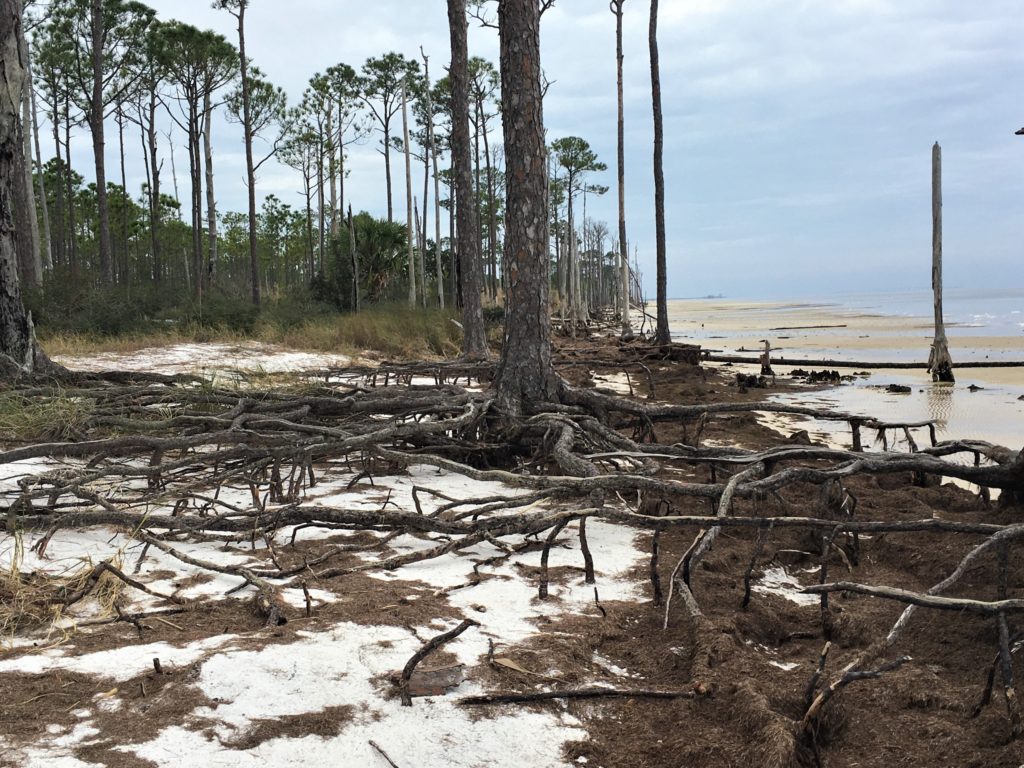
Still, the erosion caused by Michael is evident here.
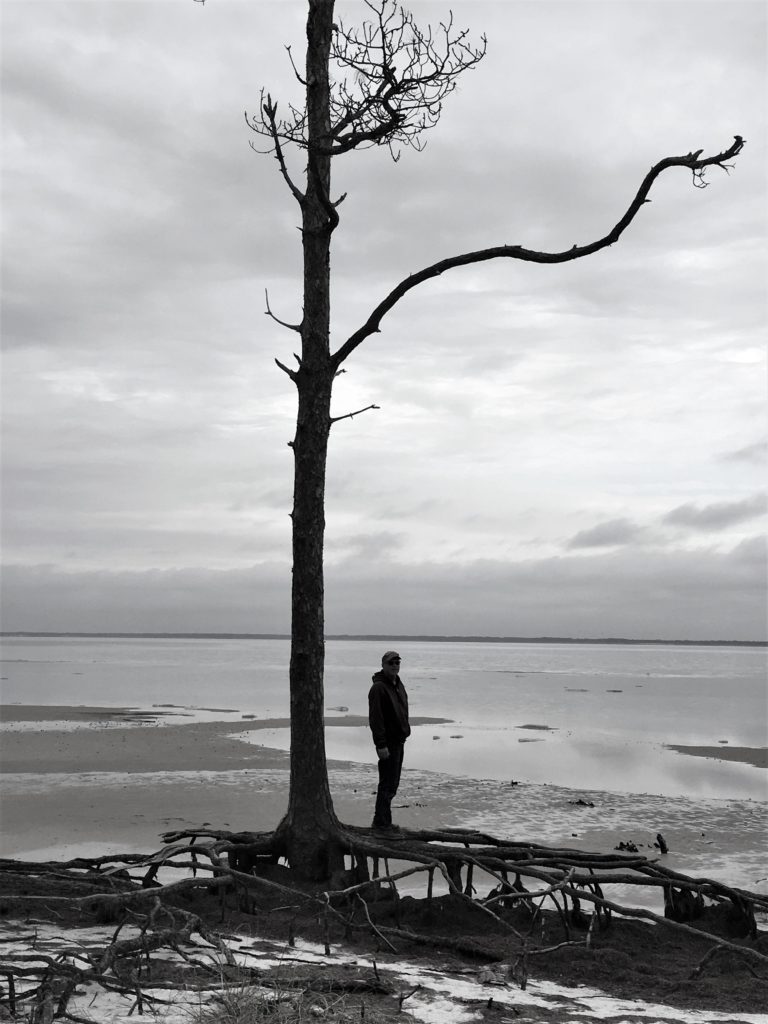
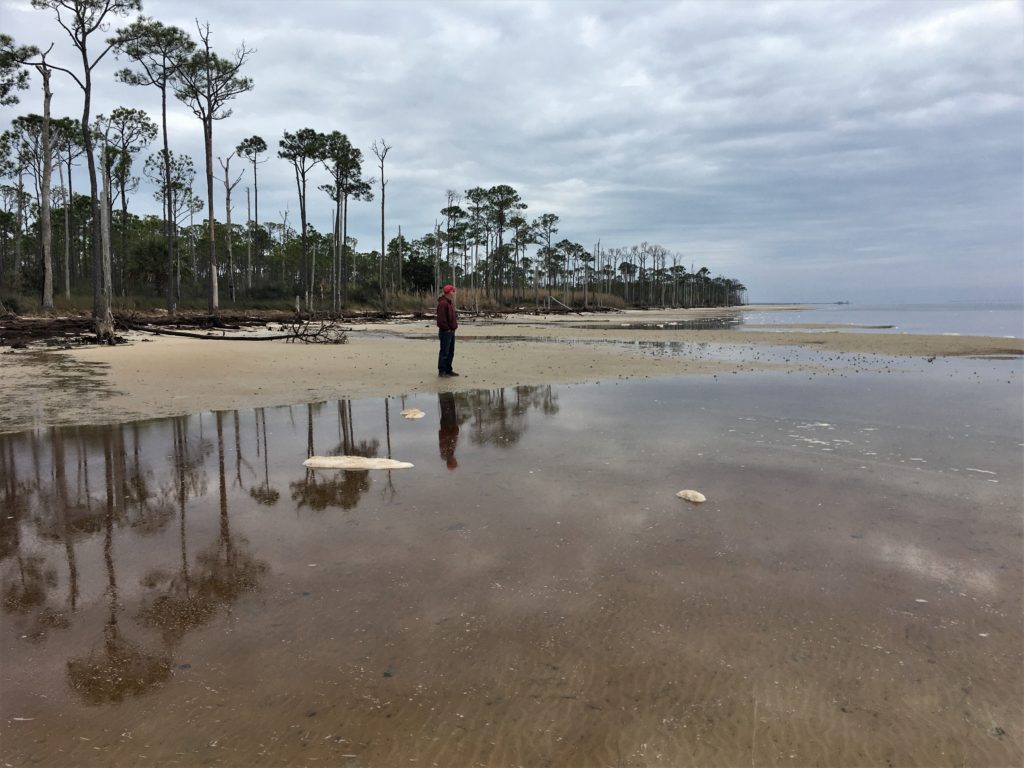
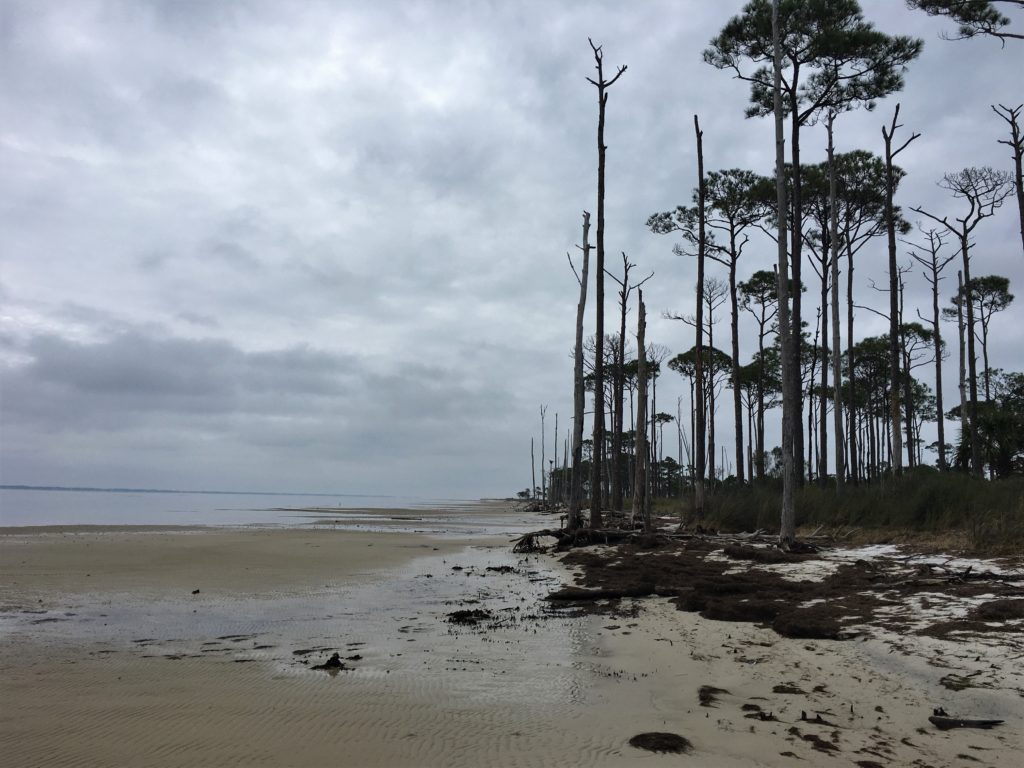
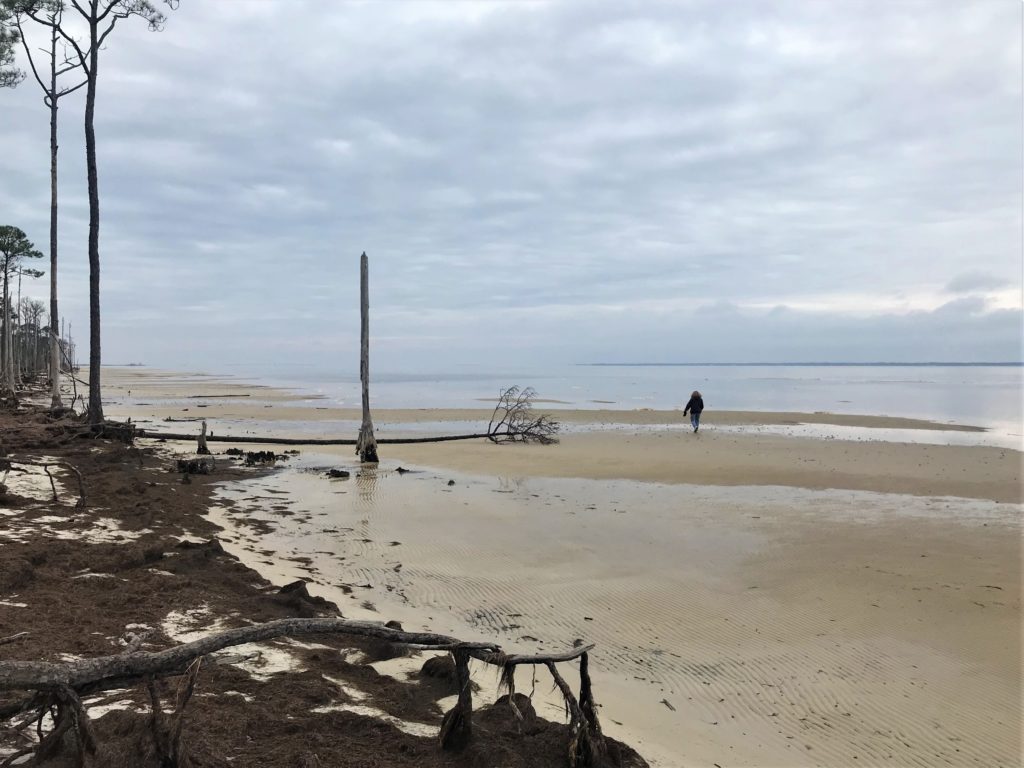
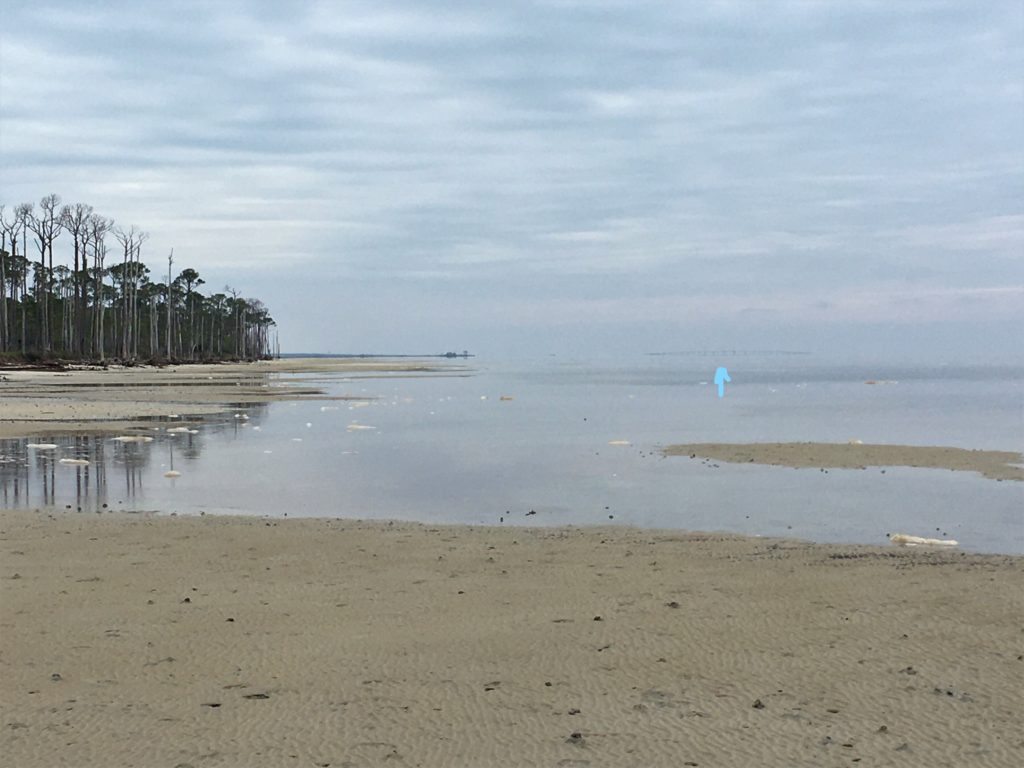
A short walk across the land, and we were on the Gulf of Mexico side. Miles of beach in either direction. And only beach. No homes, no high-rises. Nothing but sand, sea grasses, water and sky. And a few people. And a good sampling of shells, and other things washed up on the shore.
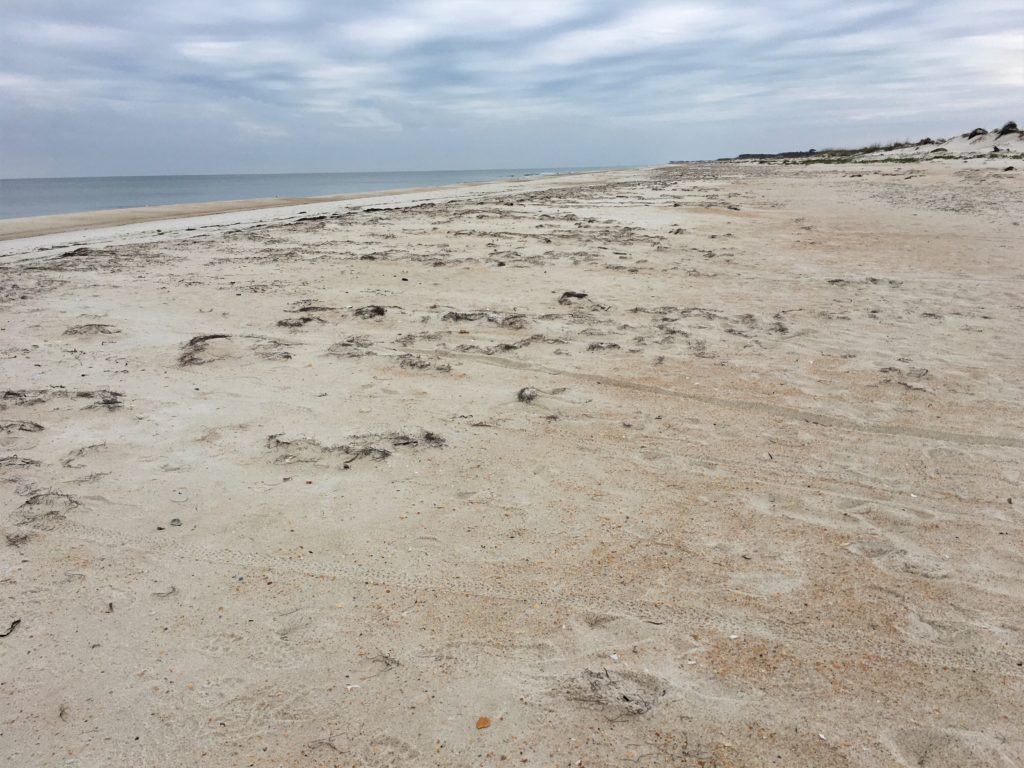
It’s such a blessing for us!
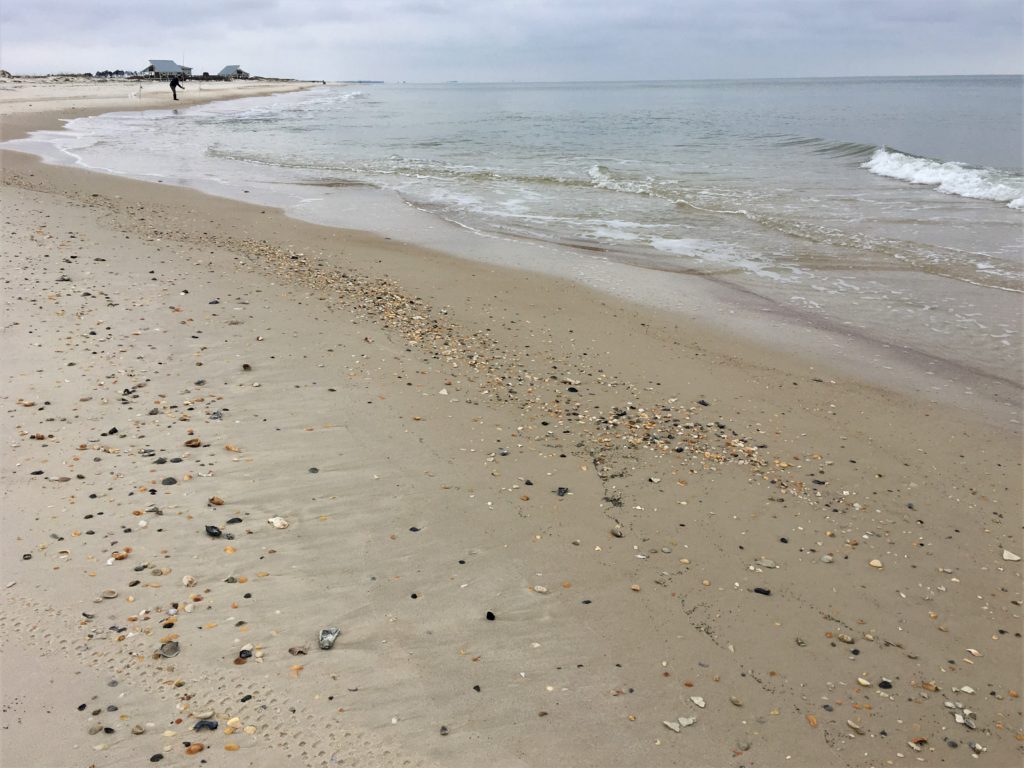
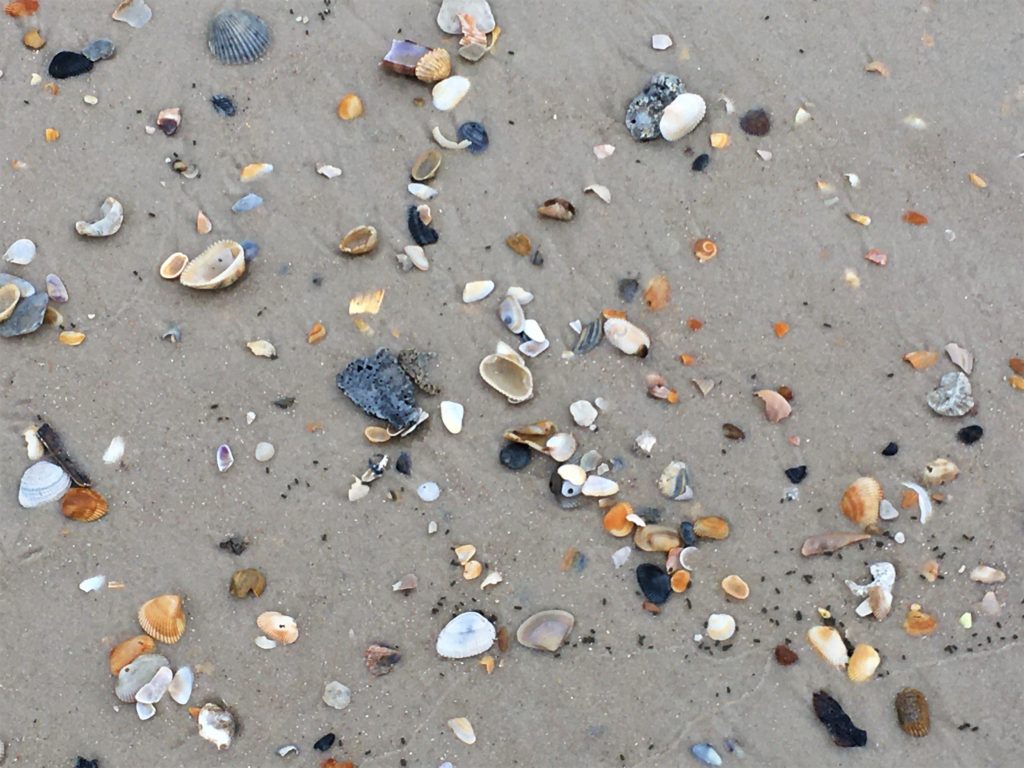
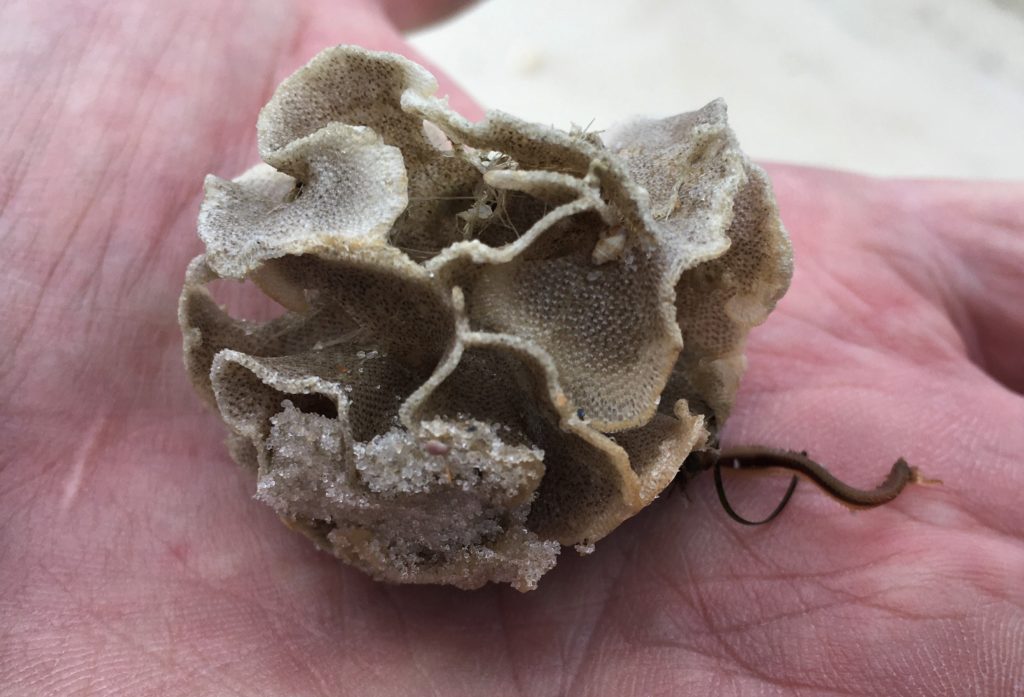

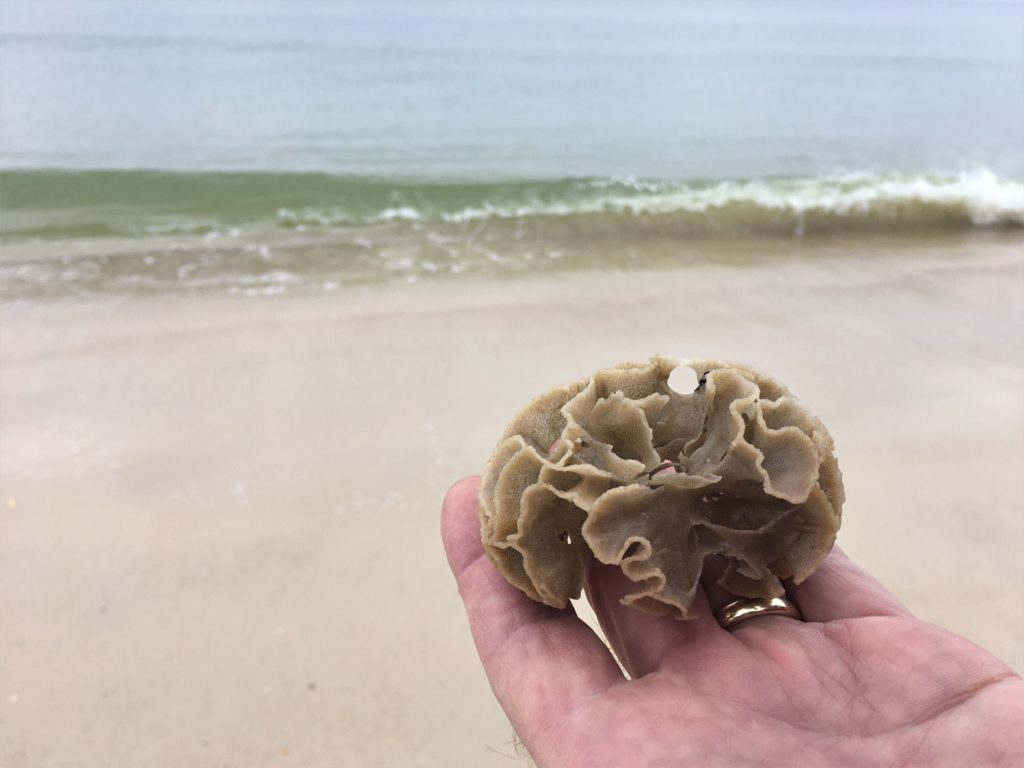

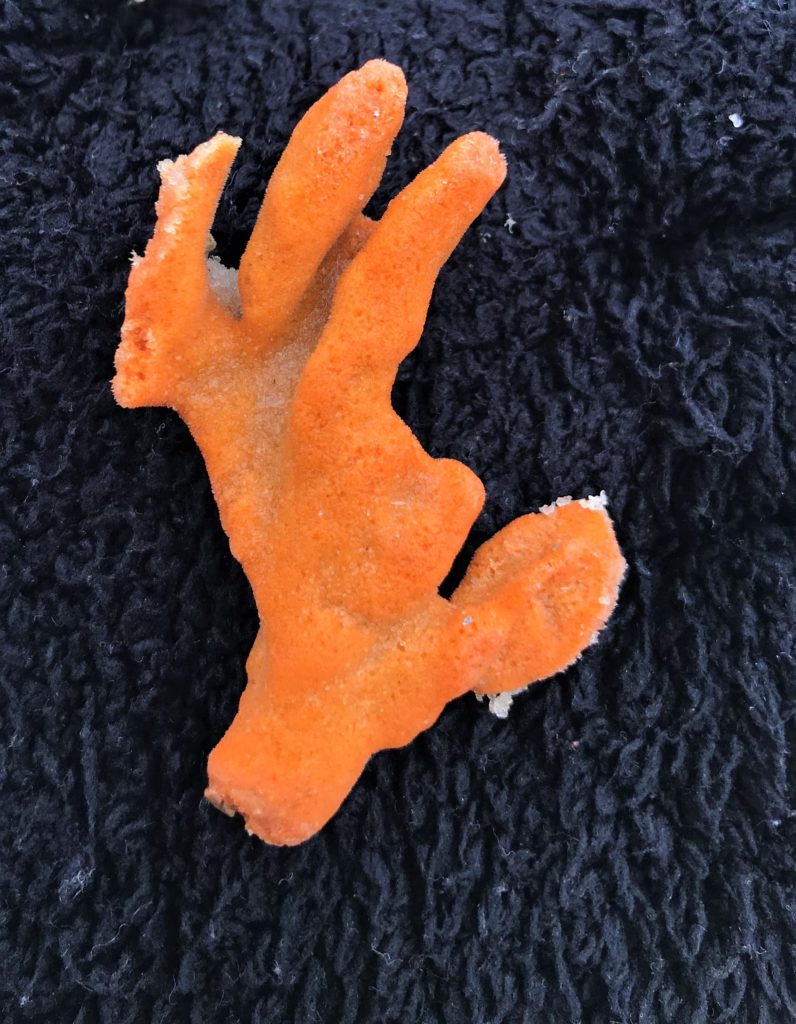
Still, it was really pretty! Especially against my black glove. : )
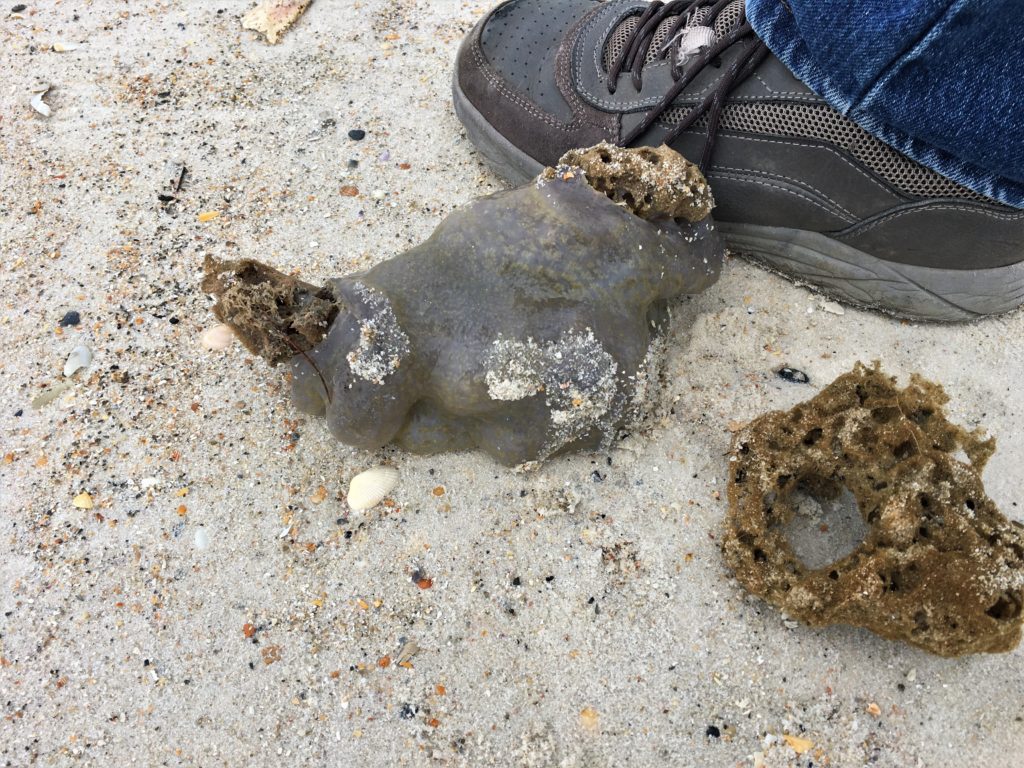
I have no idea why. I looked it up, and jellyfish don’t eat sponges, nor the reverse.
Just one of those things that makes you go, hmmm . . . .

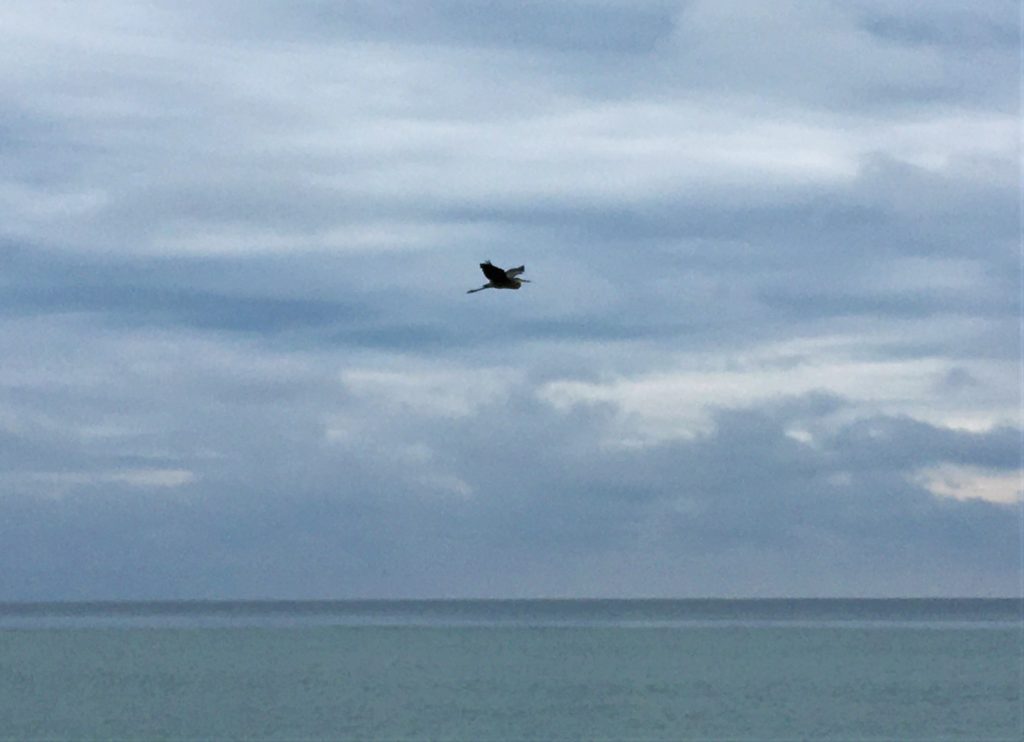
A couple of seagulls. And I mean just a couple. That’s it.
We enjoyed our walk before heading into town to see what was there.
I didn’t take pictures. You pretty much saw it when we drove in yesterday. 😊
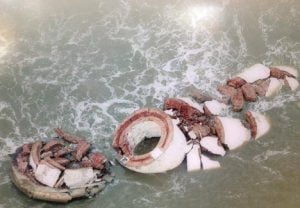
The people of the town collected all the bricks and rebuilt the 75′ lighthouse where it stands now in the center of the island. The reconstruction was completed in December 2008.
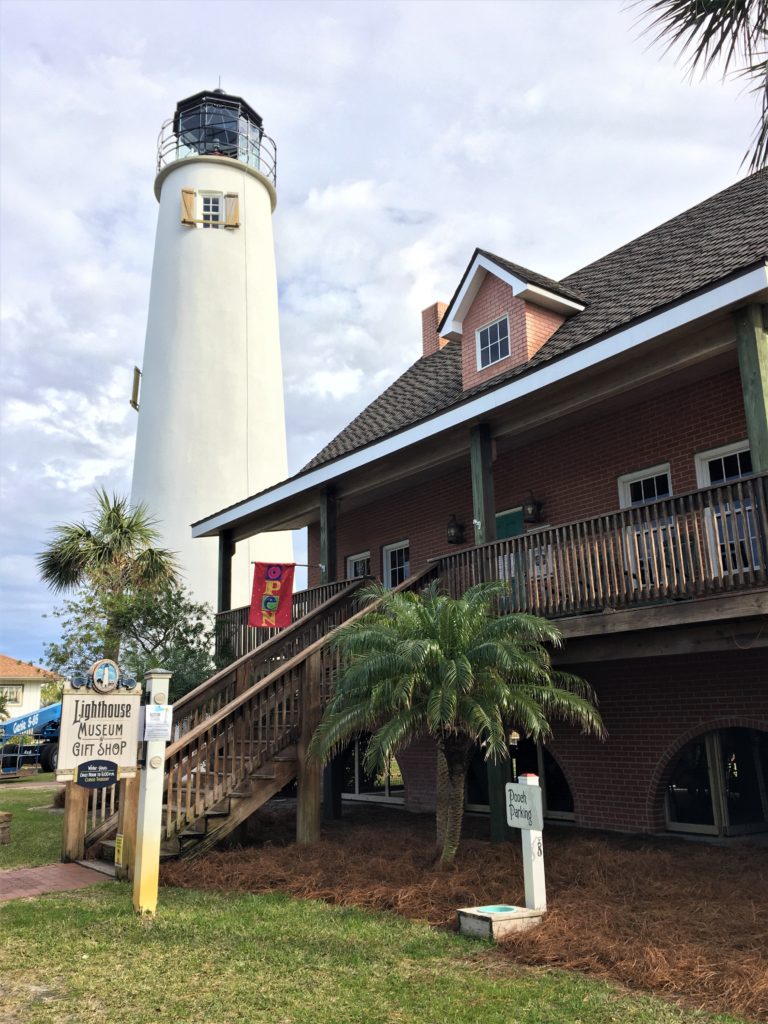
I woke up at 2:30am, and then spent hours spinning around in my bed like a roped alligator. I should’ve taken a second Trazadone, but I guess I was too lazy to get out of bed. I finally managed to return to sleep sometime around 5:00am and at least managed another two hours. (Does this belong on today’s post, or tomorrow’s??)
